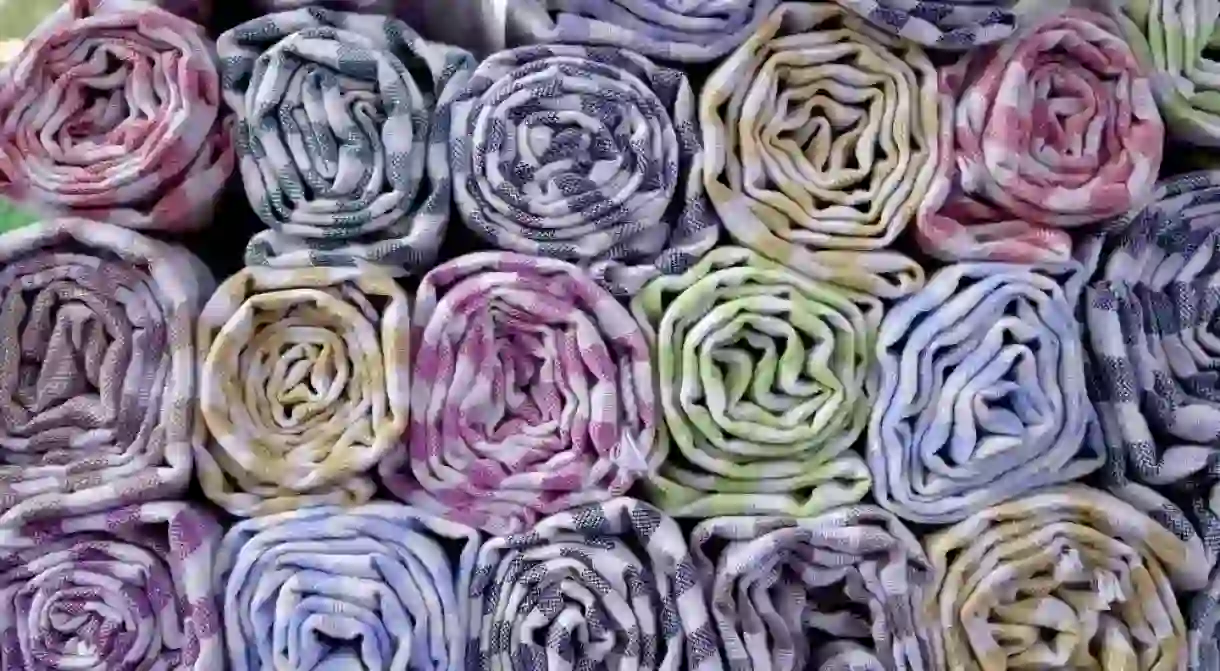A Guide To Cambodian Traditional Dress

Cambodia is a country steeped in tradition and when it comes to clothing, it’s no different. With an outfit for every occasion, here’s a guide to Cambodia’s traditional dress.
As a rapidly modernising country with a huge young population, the majority of Cambodians living in urban hubs – especially the younger generation – wear modern attire in their daily lives.

However, when it comes to an important occasion, they will slip into traditional festive costumes. And if you step outside the cities, rural Cambodia paints a very different picture, where a range of traditional outfits cater for every event.
With the majority of Cambodian families relying on agriculture or fishing, most of the day-to-day clothing reflects this, with comfortable and convenient items chosen. Sitting in contrast, festive attire tends to be glitzy, glamorous, colourful and flashy.
Krama
Whether you’re in the countryside or the city, the krama can be seen everywhere and is undoubtedly Cambodia’s signature fabric. To the untrained eye, the checked cloth is solely used as a fashion item, hanging around the neck like a scarf. Of course, this is one of its uses, but there are a multitude more, with the krama forming an essential item to any household.

Elderly men and women can often be seen with them wrapped around their heads to protect them from the sun, or to provide padding to balance large baskets atop. Kramas are often used as a sarong in the countryside, wrapped around the feet as protection when scaling trees and used to carry objects in.
Another common use, regardless of whether you’re in the city or provinces, is as a hammock for babies. And, of course, they are the perfect tool to wipe away the beads of sweat that constantly drip down your face.
Traditionally in mauve and white squares, modern kramas come in a range of sizes, colours and quality, and are available to buy from any of the markets that dot the country.
Sampot
The sampot is the national garment of Cambodia, dating back to the Funan era when Chinese diplomats ordered the Cambodian king to request his people cover themselves up.
Worn by men and women – and still prevalent in the countryside – the large piece of cloth, which usually measures between five and six-feet long, is wrapped around the lower part of the body as a sarong.
The cloth can be draped and folded in a variety of ways depending on the occasion and type of sampot, with several variations depending on social class and use. Examples of the types of sampot can be found below.
Sampot Chang Kben
This is usually reserved for middle and upper-class females for day-to-day wear, but is a tradition that dwindled out at the start of the 20th century. It resembles trousers rather than a skirt and measures more than nine-feet long and three-feet wide.
It is worn by wrapping the material around the waist and pulling away from the body. A knot is then drawn between the legs and held in place by a belt. In modern Cambodia, it is worn by women for special occasions.

Sampot Tep Apsara
This form of sampot dates back to the Angkor era, with the apsaras carved into the bas-reliefs at Angkor Wat wearing the fabric. It is tied at the waist and held up using a golden belt. It is no longer worn in Cambodia but can be seen today in many of the apsara performances that take place in Siem Reap and Phnom Penh.
Av Pak
This is a blouse worn by women. It is made from plain-stamped cotton, features elaborate hand-painted patterns and is embroidered with silk and gold thread. It has a high, embroidered collar and is often teamed with a sampot and worn as formal wear, or for special occasions.
https://www.youtube.com/watch?v=yXiC8p12ufA
Silk
Cambodia has a rick silk weaving tradition, with the ancient art stretching back centuries. While the craft has been in decline over the last few decades, it is on the rise once again thanks to a series of initiatives to revive the trade.
Many items of clothing are traditionally made from silk, with the intricate patterns indigenous to Cambodia. Golden silk is Cambodia’s national thread and there are various projects to retrain artisans that are open to visitors.
Artisans Angkor Silk Farm in Siem Reap gives a great free insight into the process and craft, as well as the opportunity to view and buy traditional garments. Phnom Penh is also gearing up to welcome the opening of silk pioneer, Vannary San’s, The Silk Farm, where guests can also find out more about the intricate process.














